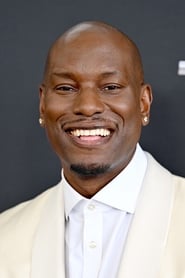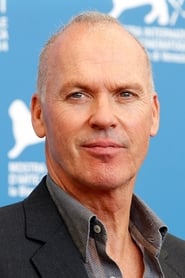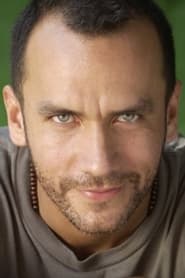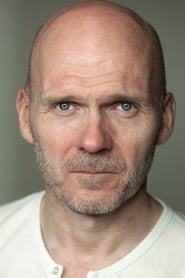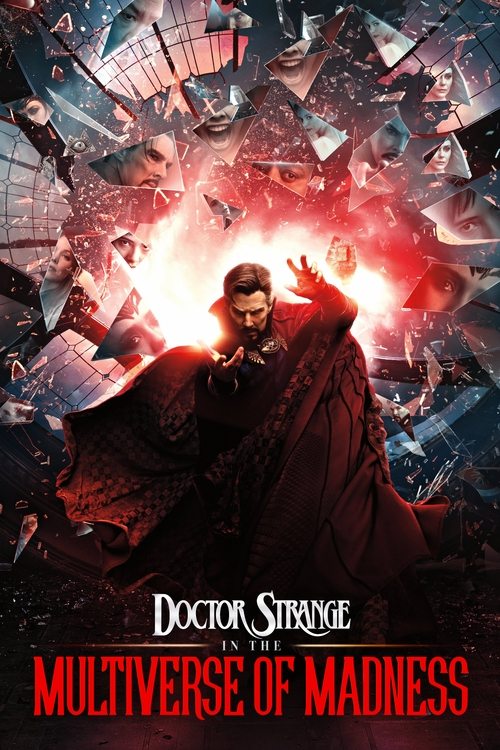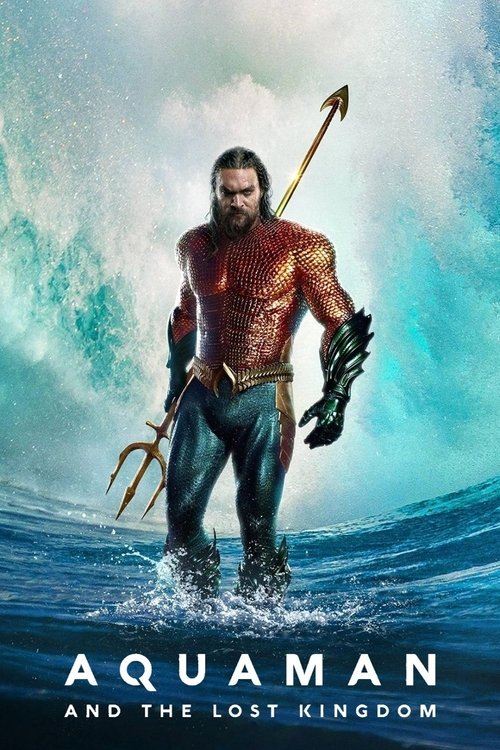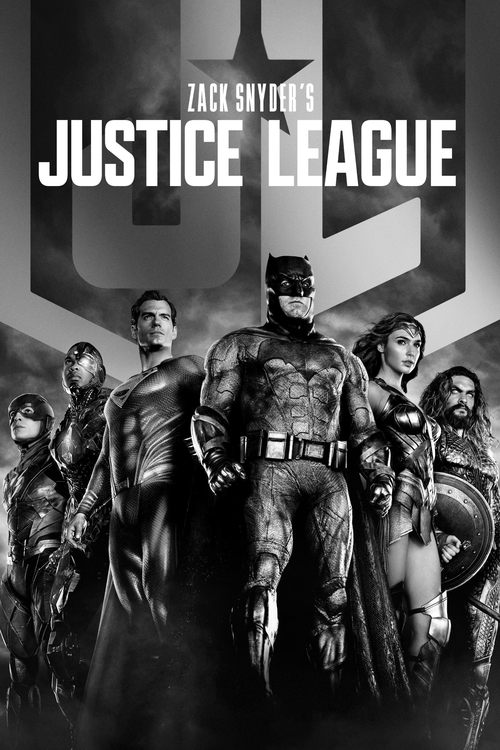
Ask Your Own Question
What is the plot?
In 1990, a sterile hospital in Greece sets the somber stage for a story of friendship, illness, and ambition. Ten-year-old Michael Morbius sits quietly in a hospital room, his pale face framed by the cold light of medical monitors. He suffers from a rare and debilitating blood disorder that isolates him from the world. Into this bleak existence arrives a new patient, a boy named Lucien Crown, who shares Michael's affliction. Michael immediately renames him "Milo," saying with a quiet authority, "You're not Lucien anymore. You're Milo now." This act of renaming signals the beginning of a deep bond between the two boys, united by their suffering and their shared desire to be normal. Overseeing them is Nicholas, the hospital director and a father figure to both. He watches Michael with a mixture of hope and expectation, telling him, "You have a gift, Michael. Don't waste it." Nicholas arranges for Michael to attend medical school in New York, while he stays behind to care for Milo.
Years later, Michael Morbius is a brilliant biochemist at a prestigious medical school in New York City, driven by the desperate need to cure his blood disease. His research leads him to an experimental serum that fuses vampire bat DNA with human genetics, promising a cure but with unknown consequences. To test this radical treatment, Michael secures a private mercenary vessel in international waters, outfitted with advanced gene-splicing equipment. The sterile, claustrophobic lab on the ship is where Michael injects himself with the serum, hoping for salvation.
But salvation comes at a terrible cost. The serum transforms Michael into a living vampire, granting him extraordinary powers--superhuman strength, speed, echolocation, and the ability to fly--but also a relentless thirst for blood. His first moments as a vampire are chaotic and violent. In a visceral, nightmarish sequence, Michael, overwhelmed by his new instincts, attacks and kills the entire mercenary crew aboard the ship. The camera lingers on his monstrous transformation: his eyes glowing red, his face contorted in a savage snarl as he tears through the men who once surrounded him. The vessel becomes a blood-soaked tomb, the echo of his victims' deaths haunting the cold metal corridors.
Returning to New York, Michael isolates himself in his lab, grappling with his monstrous new identity. He feeds on blood samples to stave off his hunger, his eyes glowing red in the dim light as bats swarm around him, responding to his command. His physical transformation is juxtaposed with moments of profound loneliness and despair. The once hopeful scientist is now a creature caught between humanity and monstrosity.
Milo reenters Michael's life, visiting him just as he begins to relapse into his vampire state. Unlike Michael, Milo embraces the power the serum offers. He urges Michael to accept their new nature, saying, "We don't have to be sick anymore. We can be something more." But Michael resists, fearful of what the serum has done to him and the darkness it brings.
The tension escalates when Michael is arrested by FBI agents Simon Stroud and Al Rodriguez, who are investigating a series of brutal murders linked to Michael's transformation. In a tense interrogation scene, Michael maintains his composure, but the agents' suspicions grow. After the interrogation, Milo visits Michael in his cell, leaving behind his cane--a subtle but telling sign. Michael soon realizes that Milo has stolen a vial of the serum and used it on himself. The realization hits like a thunderclap: Milo is the one responsible for the recent murders, including that of a nurse who worked with Michael.
Michael's horror deepens as he watches Milo's transformation into a vampire. Milo's first act as a vampire is cold-blooded murder at a newsstand, a brutal display of his newfound power and lack of restraint. When Michael confronts him, Milo taunts him, "You're holding back, Michael. You could be so much more." Their confrontation spills into the subway tunnels beneath New York, where they clash in a breathtaking aerial battle. They fly through the darkened tunnels, crashing into walls and each other, their red eyes glowing in the shadows. Police arrive to arrest Milo, but he slaughters them with savage efficiency, further cementing his descent into violence and chaos. Michael narrowly escapes into the labyrinthine tunnels, haunted by the destruction his friend has wrought.
Back on the surface, Milo's rage turns inward. He confronts Nicholas at the hospital where Martine Bancroft, Michael's partner and fellow scientist, is hospitalized. In a brutal and shocking scene, Milo accuses Nicholas of always favoring Michael, saying, "You pitied me before. Now you despise me." With a savage outburst, Milo mortally wounds Nicholas, leaving the adoptive father figure to die alone in the sterile hospital corridor. Michael arrives too late to save Nicholas, his grief compounded by the betrayal of his childhood friend.
Milo's vendetta culminates in a final confrontation at the hospital. He uses Martine as bait to lure Michael into a deadly showdown. During their battle, Milo fatally wounds Martine, her blood staining the white sheets as she collapses. In a moment of desperate compassion, Martine bites Michael's lip, drinking a drop of his blood before she dies. The camera lingers on her pale face, eyes fluttering closed, the weight of her sacrifice palpable.
Devastated, Michael bites Martine, infusing her with his vampire blood. In a haunting and tender moment, Martine awakens, her eyes now glowing red, transformed into a vampire herself. This resurrection marks a poignant twist: Martine's fate is forever entwined with Michael's dark new world.
The climax unfolds with Michael summoning an army of bats to restrain Milo, their swirling forms enveloping the hospital room in a vortex of darkness. With grim determination, Michael injects Milo with an antibody designed to kill the vampiric infection. Milo writhes and screams, his monstrous form dissolving into death. The camera closes in on Michael's anguished face as he watches his friend die, the weight of loss heavy on his shoulders.
In the aftermath, Michael takes to the skies, flying away with the bats that obey his command. His silhouette cuts through the night, a lone figure mourning the destruction wrought by his quest for a cure. The city lights flicker below, indifferent to the tragedy unfolding above.
Meanwhile, FBI agents Stroud and Rodriguez stand at the scene of the final confrontation, unharmed but silent witnesses to the carnage. Stroud's metal arm gleams subtly, a nod to his comic book origins and hinting at future pursuits.
The film closes with a mid-credits scene that shifts the narrative toward a larger universe. Adrian Toomes, the Vulture, appears mysteriously transported into Michael's world. He muses darkly about Spider-Man's involvement in these strange occurrences and approaches Michael, now a fugitive. "We should talk," he says, suggesting an alliance that promises future conflicts and collaborations.
Thus, Michael Morbius is left to navigate his new existence--a vampire cursed by his own ambition, mourning his lost loved ones, and standing on the precipice of a shadowy future where heroes and monsters blur. Martine's resurrection as a vampire adds a complex new dynamic, while the arrival of the Vulture hints at a sprawling saga yet to unfold. The story ends not with closure, but with the haunting promise of more darkness to come.
More Movies Like This
Browse All Movies →What is the ending?
At the end of "Morbius," Dr. Michael Morbius confronts his former friend, Milo, who has become a powerful vampire-like creature. After a fierce battle, Morbius ultimately defeats Milo, but not without significant emotional turmoil. The film concludes with Morbius accepting his new identity as a living vampire, while also grappling with the consequences of his actions. The fate of the main characters is left open-ended, hinting at future conflicts.
As the climax of "Morbius" unfolds, the scene shifts to a dimly lit, abandoned warehouse where Dr. Michael Morbius, played by Jared Leto, faces off against his former friend, Milo, portrayed by Matt Smith. The atmosphere is thick with tension, the air crackling with the anticipation of their inevitable confrontation. Milo, who has embraced his transformation into a vampire-like creature, taunts Morbius, reveling in his newfound power and the chaos he has unleashed.
Morbius, still grappling with the duality of his existence, feels a deep sense of betrayal and sorrow. He had once considered Milo a brother, and now they stand as adversaries. The warehouse is filled with shadows, the flickering lights casting eerie shapes on the walls, mirroring the internal conflict within Morbius. As they engage in a fierce battle, the choreography of their movements is fluid yet brutal, showcasing their superhuman abilities. Morbius, using his intelligence and agility, tries to outmaneuver Milo, who is fueled by rage and a desire for dominance.
The fight escalates, with both characters displaying their vampiric powers--superhuman strength, speed, and echolocation. Morbius, despite his reluctance to fully embrace his vampiric nature, realizes that he must tap into his abilities to save himself and potentially stop Milo. The emotional stakes are high; Morbius is not just fighting for his life but also for the remnants of his humanity.
As the battle reaches its peak, Morbius manages to gain the upper hand. In a moment of desperation, Milo attempts to overpower him, but Morbius, driven by a mix of sorrow and determination, ultimately delivers a fatal blow. The scene is poignant, filled with a sense of loss as Morbius watches his friend fall, realizing that he has not only lost Milo but also a part of himself in the process. The warehouse, once a battleground, now feels like a tomb, echoing with the weight of their shared history.
In the aftermath, Morbius stands alone, the weight of his actions heavy on his shoulders. He has defeated Milo, but the victory feels hollow. The emotional turmoil is palpable; he has embraced his identity as a living vampire, yet he is haunted by the consequences of his transformation. The camera lingers on Morbius's face, capturing the conflict within him--he is both a hero and a monster.
The film concludes with Morbius accepting his new reality. He walks away from the scene, a solitary figure against the backdrop of the city, symbolizing his ongoing struggle with his identity. The fate of Milo is sealed, leaving Morbius to ponder the cost of his powers and the path he has chosen. The ending leaves the audience with a sense of ambiguity regarding Morbius's future, hinting at the potential for further conflict and exploration of his character in subsequent stories.
As the credits roll, the final scenes suggest that Morbius's journey is far from over, setting the stage for future encounters and the exploration of his complex nature as both a scientist and a creature of the night.
Is there a post-credit scene?
Yes, "Morbius" features two post-credit scenes that expand on the film's universe and hint at future developments.
In the first post-credit scene, we see Michael Morbius, played by Jared Leto, in a dark, secluded area. He is approached by a mysterious figure who turns out to be Adrian Toomes, also known as Vulture, portrayed by Michael Keaton. Toomes, who was last seen in "Spider-Man: Homecoming," has inexplicably appeared in this universe after the events of "Spider-Man: No Way Home." He expresses curiosity about Morbius and suggests that they could work together, implying a potential alliance or conflict in the future. Morbius, intrigued yet cautious, listens to Toomes, who mentions that he has a plan, leaving the audience with a sense of impending collaboration or confrontation.
The second post-credit scene shifts to Morbius driving through a desolate landscape at night. He pulls over and exits the car, revealing his vampiric abilities as he takes to the skies, showcasing his transformation and newfound powers. This scene emphasizes Morbius's struggle with his identity and the duality of his nature as both a scientist and a creature of the night. It encapsulates his internal conflict and the loneliness that comes with his transformation, setting the stage for his future as a complex anti-hero.
These scenes not only tease potential future interactions with other characters in the Marvel universe but also deepen Morbius's character arc, highlighting his isolation and the choices he faces as he navigates his new existence.
What is the origin of Michael Morbius's condition?
Michael Morbius, a brilliant biochemist, suffers from a rare blood disease that weakens him physically. In his quest for a cure, he conducts an experiment using vampire bat DNA, which leads to his transformation into a living vampire.
How does Morbius's transformation affect his relationships?
After transforming into Morbius, he struggles with his new identity and the consequences of his actions. His relationship with his childhood friend, Lucien, who becomes the antagonist Milo, deteriorates as Milo embraces the darker aspects of their shared condition.
What role does Martine Bancroft play in Morbius's journey?
Martine Bancroft, Morbius's love interest and fellow scientist, supports him throughout his transformation. She is deeply concerned about the moral implications of his experiments and ultimately becomes a victim of the chaos that ensues from Morbius's struggle with his vampiric urges.
What motivates Milo to become the antagonist in the story?
Milo, who also suffers from the same blood disease, is motivated by jealousy and a desire for power. After Morbius refuses to share his cure with him, Milo takes matters into his own hands, using the same bat DNA to transform into a more powerful version of Morbius, leading to a conflict between them.
How does Morbius cope with his bloodlust after becoming a vampire?
Morbius grapples with his newfound thirst for human blood, which he tries to control by using synthetic blood. His internal struggle is a central theme, as he seeks to maintain his humanity while battling the monstrous instincts that come with his transformation.
Is this family friendly?
"Morbius," produced in 2022, contains several elements that may not be suitable for children or sensitive viewers. Here are some potentially objectionable or upsetting aspects:
-
Violence and Gore: The film features scenes of intense violence, including physical confrontations, bloodshed, and the aftermath of attacks. Characters are shown in distressing situations, and there are moments of graphic imagery that may be unsettling.
-
Dark Themes: The narrative explores themes of illness, desperation, and the moral dilemmas associated with power and transformation. These themes may be heavy for younger audiences to process.
-
Monstrous Transformations: The protagonist undergoes a transformation that results in a monstrous appearance and behavior, which could be frightening for children. The visual effects used to depict these changes can be intense.
-
Death and Loss: The film includes scenes that deal with death and the emotional impact of loss, which may be upsetting for younger viewers.
-
Mature Language: There are instances of strong language that may not be appropriate for all audiences.
Overall, while "Morbius" is a superhero film, its darker elements and mature themes may make it unsuitable for a family-friendly viewing experience.







